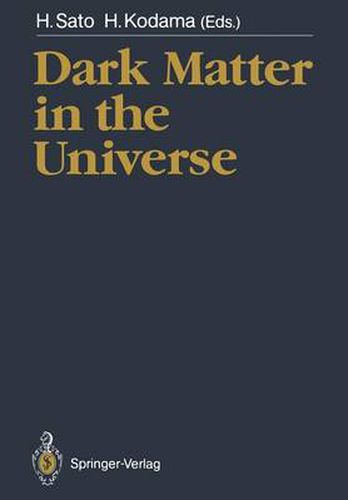Readings Newsletter
Become a Readings Member to make your shopping experience even easier.
Sign in or sign up for free!
You’re not far away from qualifying for FREE standard shipping within Australia
You’ve qualified for FREE standard shipping within Australia
The cart is loading…






This title is printed to order. This book may have been self-published. If so, we cannot guarantee the quality of the content. In the main most books will have gone through the editing process however some may not. We therefore suggest that you be aware of this before ordering this book. If in doubt check either the author or publisher’s details as we are unable to accept any returns unless they are faulty. Please contact us if you have any questions.
Dark matter was first introduced by Zwicky in 1933 to resolve a discrepancy be tween the dynamical and luminous masses of the Coma cluster. In spite of tremen dous developments in observations and various theoretical attempts, the problem of dark matter has not been resolved but has rather deepened in mystery. Though it is now certain that dark matter constitutes a dominant part of the matter in the universe, its distribution and accurate abundance are not known well. Though many people believe that it consists of non-baryonic matter, no one can reject the bary onic candidate for sure. Though it may have surely played important roles in the formation of galaxies and their large-scale distribution, there exists no theory which is consistent with all the observational facts. Resolution of this frustrating situation is one of the urgent problems in astronomy, cosmology and particle physics. One obstacle for this is the diverse nature of the problem. More researchers are therefore invited to participate in this rich field. This volume contains lectures presented at the third N ishinomiya-Yukawa Memo rial Symposium on Dark Matter in the Universe held on 10-11 November 1988, in Nishinomiya City. This symposium was intended to present an introduction of the dark matter problem to young newcomers, and physicists and astrophysicists who had not specialized in this field. These proceedings will provide them with a comprehensive and current survey of the problem.
$9.00 standard shipping within Australia
FREE standard shipping within Australia for orders over $100.00
Express & International shipping calculated at checkout
This title is printed to order. This book may have been self-published. If so, we cannot guarantee the quality of the content. In the main most books will have gone through the editing process however some may not. We therefore suggest that you be aware of this before ordering this book. If in doubt check either the author or publisher’s details as we are unable to accept any returns unless they are faulty. Please contact us if you have any questions.
Dark matter was first introduced by Zwicky in 1933 to resolve a discrepancy be tween the dynamical and luminous masses of the Coma cluster. In spite of tremen dous developments in observations and various theoretical attempts, the problem of dark matter has not been resolved but has rather deepened in mystery. Though it is now certain that dark matter constitutes a dominant part of the matter in the universe, its distribution and accurate abundance are not known well. Though many people believe that it consists of non-baryonic matter, no one can reject the bary onic candidate for sure. Though it may have surely played important roles in the formation of galaxies and their large-scale distribution, there exists no theory which is consistent with all the observational facts. Resolution of this frustrating situation is one of the urgent problems in astronomy, cosmology and particle physics. One obstacle for this is the diverse nature of the problem. More researchers are therefore invited to participate in this rich field. This volume contains lectures presented at the third N ishinomiya-Yukawa Memo rial Symposium on Dark Matter in the Universe held on 10-11 November 1988, in Nishinomiya City. This symposium was intended to present an introduction of the dark matter problem to young newcomers, and physicists and astrophysicists who had not specialized in this field. These proceedings will provide them with a comprehensive and current survey of the problem.